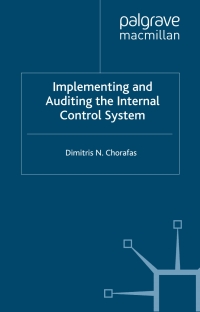Question
Froya Fabrikker A/S of Bergen, Norway, is a small company that manufactures specialty heavy equipment for use in North Sea oil fields. The company uses
Froya Fabrikker A/S of Bergen, Norway, is a small company that manufactures specialty heavy equipment for use in North Sea oil fields. The company uses a job-order costing system that applies manufacturing overhead cost to jobs on the basis of direct labor-hours. Its predetermined overhead rate was based on a cost formula that estimated $342,000 of manufacturing overhead for an estimated allocation base of 950 direct labor-hours. The following transactions took place during the year:
- Raw materials purchased on account, $210,000.
- Raw materials used in production (all direct materials), $195,000.
- Utility bills incurred on account, $61,000 (95% related to factory operations, and the remainder related to selling and administrative activities).
- Accrued salary and wage costs:
| Direct labor (1,025 hours) | $ | 240,000 |
| Indirect labor | $ | 92,000 |
| Selling and administrative salaries | $ | 120,000 |
- Maintenance costs incurred on account in the factory, $56,000
- Advertising costs incurred on account, $138,000.
- Depreciation was recorded for the year, $86,000 (75% related to factory equipment, and the remainder related to selling and administrative equipment).
- Rental cost incurred on account, $111,000 (80% related to factory facilities, and the remainder related to selling and administrative facilities).
- Manufacturing overhead cost was applied to jobs, $?.
- Cost of goods manufactured for the year, $790,000.
- Sales for the year (all on account) totaled $1,300,000. These goods cost $820,000 according to their job cost sheets.
Options for blanks:
- No journal entry required
- Accounts payable
- Accounts receivable
- Accumulated depreciation
- Advertising expense
- Commissions
- Cost of goods sold
- Depreciation expense
- Direct materials
- Finished goods
- Indirect materials
- Manufacturing overhead
- Purchases
- Raw materials
- Rent expense
- Salaries and wages payable
- Salaries expense
- Sales
- Utilities expense
- Work in process
The balances in the inventory accounts at the beginning of the year were:
| Raw Materials | $ | 32,000 |
| Work in Process | $ | 23,000 |
| Finished Goods | $ | 62,000 |
Required:
1. Prepare journal entries to record the preceding transactions.
2. Post your entries to T-accounts. (Dont forget to enter the beginning inventory balances above.)
3. Prepare a schedule of cost of goods manufactured.
4A. Prepare a journal entry to close any balance in the Manufacturing Overhead account to Cost of Goods Sold.
4B. Prepare a schedule of cost of goods sold.
5. Prepare an income statement for the year.
| ||||||||||||||||||||||||||||||||||||||||||||||
options for blanks:
- Adjusted cost of goods sold
- Beginning finished goods inventory
- Beginning raw materials inventory
- Cost of goods available for sale
- Direct labor
- Ending raw materials inventory
- Indirect labor
- Indirect materials
- Manufacturing overhead applied to work in process
- Unadjusted cost of goods sold
- Utilities, factory
- Work in process, beginning
and
- Less: Beginning work in process inventory
- Less: Ending raw materials inventory
- Less: Ending work in process inventory
- Less: Manufacturing overhead cost
- Less: Purchases of raw materials
- Less: Indirect materials included in manufacturing overhead
Options for 4b
- Adjusted cost of goods sold
- Cost of goods available for sale
- Unadjusted cost of goods sold
Step by Step Solution
There are 3 Steps involved in it
Step: 1

Get Instant Access to Expert-Tailored Solutions
See step-by-step solutions with expert insights and AI powered tools for academic success
Step: 2

Step: 3

Ace Your Homework with AI
Get the answers you need in no time with our AI-driven, step-by-step assistance
Get Started


